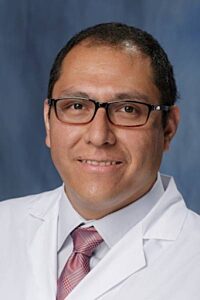VX21-522-001
-
StatusAccepting Candidates
-
Age18 Years - 65 Years
-
SexesAll
-
Healthy VolunteersNo
Objective
The purpose of this study is to evaluate the safety, and tolerability and efficacy of VX-522 in participants 18 years of age and older with cystic fibrosis and a cystic fibrosis transmembrane conductance regulator (CFTR) genotype not responsive to CFTR modulator therapy.
Description
This clinical trial information was submitted voluntarily under the applicable law and, therefore, certain submission deadlines may not apply. (That is, clinical trial information for this applicable clinical trial was submitted under section 402(j)(4) (A) of the Public Health Service Act and 42 CFR 11.60 and is not subject to the deadlines established by sections 402(j)(2) and (3) of the Public Health Service Act or 42 CFR 11.24 and 11.44.).
Details
| Full study title | A Phase 1 Single Dose Escalation Study Evaluating the Safety and Tolerability of VX-522 in Subjects 18 Years of Age and Older With Cystic Fibrosis and a CFTR Genotype Not Responsive to CFTR Modulator Therapy |
| Protocol number | OCR43319 |
| ClinicalTrials.gov ID | NCT05668741 |
| Phase | Phase 1/Phase 2 |
Eligibility
Key Inclusion Criteria:
Body mass index is less than () 50 kg
Stable CF disease
CFTR gene mutations on both alleles that are not responsive to CFTR modulator therapy o Example mutations include but are not limited to, mutations that do not produce CFTR protein (i.e., Class I): nonsense mutations (e.g., G542X, W1282X) and canonical splice mutations (e.g., 621+1G->T)
Forced expiratory volume in 1 second (FEV1) value for SAD: greater than or equal to (≥)40 percent (%), MAD: ≥ 40% to less than or equal to (≤) 90%
Key Exclusion Criteria:
History of uncontrolled asthma within a year prior to screening
History of solid organ or hematological transplantation
Hepatic cirrhosis with portal hypertension, moderate hepatic impairment (Child Pugh Score 7 to 9), or severe hepatic impairment (Child Pugh Score 10 to 15)
Arterial oxygen saturation on room air less than (
Lead researcher
-
Critical Care Medicine Specialist, Pulmonologist (Lung Specialist)Languages: Spanish, French

Participate in a study
Here are some general steps to consider when participating in a research study:
-
Step1
Contact the research team
Call or email the research team listed within the specific clinical trial or study to let them know that you're interested. A member of the research team, such as the researcher or study coordinator, will be available to tell you more about the study and to answer any questions or concerns you may have.
Primary contact
Cesar Trillo Alvarez -
Step2
Get screened to confirm eligibility
You may be asked to take part in prescreening to make sure you are eligible for a study. The prescreening process ensures it is safe for you to participate. During the prescreening process, you will be asked some questions and you may also be asked to schedule tests or procedures to confirm your eligibility.
-
Step3
Provide your consent to participate
If you are eligible and want to join the clinical trial or study, a member of the research team will ask for your consent to participate. To give consent, you will be asked to read and sign a consent form for the study. This consent form explains the study's purpose, procedures, risks, benefits and provides other important information, such as the study team's contact information.
-
Step4
Participate
If you decide to participate in a clinical trial or study, the research team will keep you informed of the study requirements and what you will need to do to throughout the study. For some trials or studies, your health care provider may work with the research team to ensure there are no conflicts with other medications or treatments.
